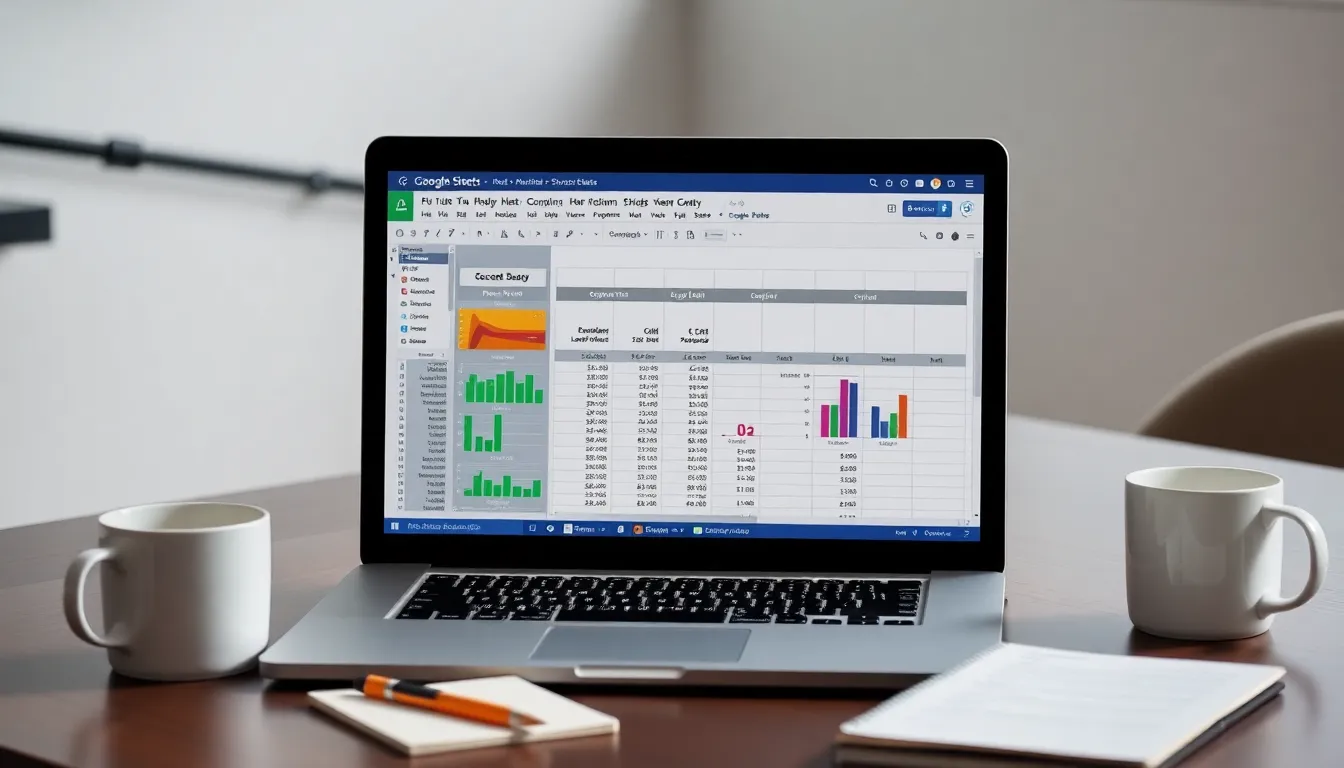Managing finances can feel like juggling flaming swords while riding a unicycle. But fear not! Budgeting spreadsheets in Google Sheets are here to save the day. They offer an easy and efficient way to track expenses, set savings goals, and even indulge in a little financial self-care—without the risk of burning your eyebrows off.
Table of Contents
ToggleOverview Of Budgeting Spreadsheet Google Sheets
Budgeting spreadsheets in Google Sheets serve as effective tools for managing personal finances, tracking expenses, and achieving set financial goals. Utilizing this platform simplifies budgeting, making it accessible and user-friendly.
Benefits Of Using Google Sheets
Using Google Sheets for budgeting offers several advantages. The cloud-based nature enables easy access from any device, which enhances convenience. Collaboration features allow multiple users to view and edit budgets in real-time, promoting teamwork. Additionally, customizable templates provide a starting point, reducing setup time. Cost-effectiveness stands out, as Google Sheets is free with a Google account. Users also benefit from built-in formulas and functions that automate calculations, saving time and reducing errors.
Key Features To Look For
Key features enhance the effectiveness of budgeting spreadsheets. Look for templates that cater to different financial scenarios, such as monthly expenses or annual budgets. Integration with other Google services, like Google Drive and Calendar, creates a seamless experience. Visual data representation, including charts and graphs, aids in understanding financial trends quickly. Additionally, features like conditional formatting highlight critical financial areas, improving decision-making. Prioritizing automation tools can simplify repetitive tasks, offering more efficiency in budget tracking.
Getting Started With Google Sheets

Google Sheets streamlines the budgeting process by enabling easy tracking of expenses and income. Users can quickly create structured spreadsheets tailored to their financial needs.
Creating Your First Budgeting Spreadsheet
Open Google Sheets and select a new spreadsheet. Start by labeling the first row with categories like “Date,” “Description,” “Category,” “Amount,” and “Notes.” Enter data under each column to track individual expenses. For example, recording groceries under “Description” helps maintain clarity. Customize the spreadsheet by using different colors for various categories to enhance visual appeal. Saving the spreadsheet in Google Drive ensures easy access from any device.
Important Formulas To Know
Mastering essential formulas enhances the functionality of your budgeting spreadsheet. Use functions like SUM to calculate total expenses easily. For instance, typing =SUM(D2:D10) sums the values in that range. Implementing the AVERAGE function allows users to analyze spending patterns by finding the average of a selected range. To categorize expenses, IF statements help distinguish between fixed and variable costs. Lastly, setting conditional formatting alerts for overspending promotes better financial responsibility.
Customizing Your Budgeting Spreadsheet
Customizing a budgeting spreadsheet enhances its effectiveness. Tailored features cater to unique financial situations and improve user experience.
Choosing The Right Categories
Selecting appropriate categories serves as a foundation for an effective budget. Focus on primary expenses like housing, utilities, groceries, and transportation. Incorporate variable costs such as entertainment, dining, and personal care for comprehensive tracking. Assessment of individual spending patterns may reveal additional categories, such as subscriptions and hobbies. Ensuring clarity in categories simplifies tracking and analysis, making budgeting more intuitive. Reassessing categories periodically helps adapt to changing financial circumstances.
Using Conditional Formatting
Implementing conditional formatting offers visual cues for budget management. Color-coding expenses helps identify overspending at a glance. For instance, red highlighting can indicate categories where spending exceeds a set limit. Applying green formatting for under-budgeted categories promotes awareness of healthy spending habits. Utilization of rules ensures automatic updates as data changes, ensuring real-time feedback. Choices in formatting styles can cater to personal preferences, enhancing engagement with the budget. Adjusting formatting based on financial goals further sharpens focus on spending habits.
Advanced Tips For Effective Budgeting
Budgeting spreadsheets in Google Sheets can be even more effective with certain advanced techniques. These tips enhance financial tracking and increase overall efficiency.
Incorporating Charts And Graphs
Visual representation of data simplifies budget analysis. Charts and graphs offer instant insights into spending patterns and trends. Users can create pie charts to showcase expense distribution across categories or bar graphs to compare monthly spending. This visualization aids in identifying areas needing improvement. Customization options allow for tailored visual appeal, enhancing user engagement.
Automating Your Budget Updates
Automation in budgeting saves time and reduces manual errors. Users can employ Google Sheets’ built-in functions to fetch data automatically from other sheets or utilize add-ons for real-time updates. Setting reminders for monthly budget reviews ensures individuals stay proactive with their finances. Additionally, linking bank accounts directly into Google Sheets offers real-time expense tracking, streamlining the budgeting process significantly.
Utilizing a budgeting spreadsheet in Google Sheets can transform financial management from a daunting task into a straightforward process. With its accessibility and customizable features it empowers users to take control of their finances effectively. By leveraging the tools and techniques discussed users can create a dynamic budgeting system that adapts to their unique needs.
Regularly updating and reassessing the spreadsheet fosters a proactive approach to financial health. The combination of visual aids automation and real-time collaboration ensures users remain engaged and informed. Embracing these strategies not only simplifies budgeting but also cultivates a more secure financial future. With the right approach anyone can master their budget and achieve their financial goals.





